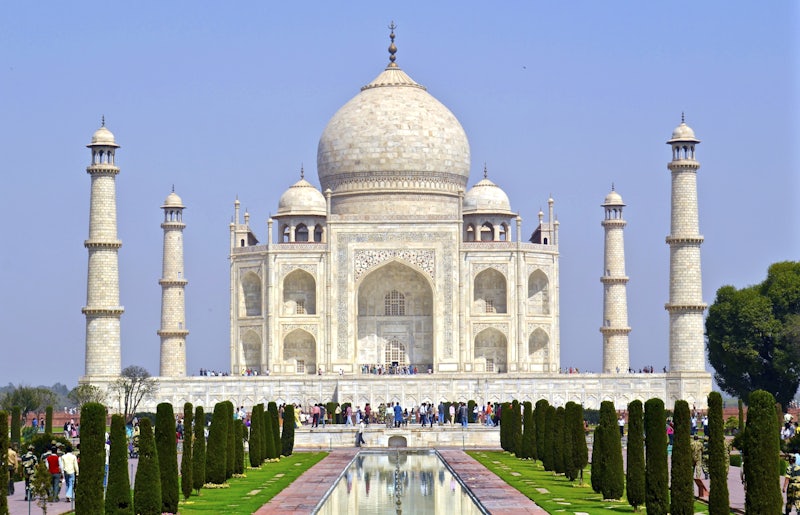Introduction
Nestled along the banks of the Yamuna River in Agra, India, the Taj Mahal stands as an exquisite testament to eternal love and architectural brilliance. This iconic monument is not only a UNESCO World Heritage Site but also a symbol of India’s rich history and cultural heritage. With its intricate design, awe-inspiring beauty, and captivating history, the Taj Mahal continues to captivate the hearts and minds of people from around the world.
A Love Story Etched in Marble
Commissioned in 1632 by the Mughal Emperor Shah Jahan, the Taj Mahal was built as a mausoleum to house the tomb of his beloved wife, Mumtaz Mahal. Mumtaz Mahal, whose name means “Chosen One of the Palace,” was not only Shah Jahan’s wife but also his trusted confidante and advisor. Her untimely death while giving birth to their 14th child left Shah Jahan devastated.
In his grief, Shah Jahan envisioned a monument that would immortalize their love for all eternity. He spared no expense in ensuring that the Taj Mahal would be an unparalleled masterpiece. The construction of the Taj Mahal involved thousands of artisans, craftsmen, and laborers, who worked tirelessly for over two decades to bring the emperor’s vision to life.
Architectural Marvel
The Taj Mahal’s architectural style is a fusion of Persian, Islamic, and Indian influences, showcasing the harmonious blending of cultures that defined the Mughal Empire. The main building is crafted entirely from white marble, which seems to change color throughout the day under the changing sunlight. The central dome, a remarkable feat of engineering, stands as the pinnacle of the monument and is surrounded by four smaller domes.
The intricate marble inlays, known as “pietra dura,” are a hallmark of Mughal artistry. Delicate floral and geometric patterns are painstakingly carved and then inlaid with semi-precious stones such as lapis lazuli, jade, and coral. The result is a mesmerizing display of craftsmanship that adds to the monument’s ethereal beauty.
A Symbol of Unity
Beyond its aesthetic magnificence, the Taj Mahal holds a deeper significance as a symbol of unity and harmony. It brings together various elements of design, art, and culture from different parts of the world, reflecting the diverse influences that shaped the Mughal Empire. This monument, with its central dome and four minarets, represents the concept of balance and symmetry, signifying the equilibrium that the Mughals sought to establish within their empire.

Preserving History for Future Generations
While the Taj Mahal has stood the test of time, it has not been immune to the challenges posed by pollution, weathering, and the effects of modern urbanization. Conservation efforts have been put in place to protect this cultural gem for future generations. These efforts include limiting vehicular traffic around the monument, controlling air pollution, and using advanced cleaning techniques to restore the marble’s natural glow.
Conclusion
The Taj Mahal’s enduring allure lies not only in its architectural grandeur but also in the poignant love story that inspired its creation. As visitors from around the world gaze upon its magnificent marble facade, they are reminded of the power of love, the beauty of artistry, and the rich tapestry of history. The Taj Mahal remains a beacon of India’s cultural legacy and an everlasting testament to the heights that human creativity and devotion can achieve.
